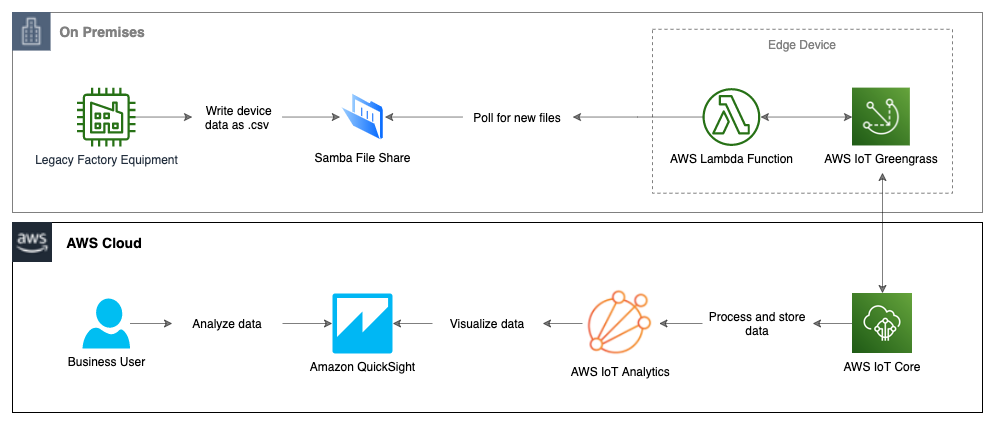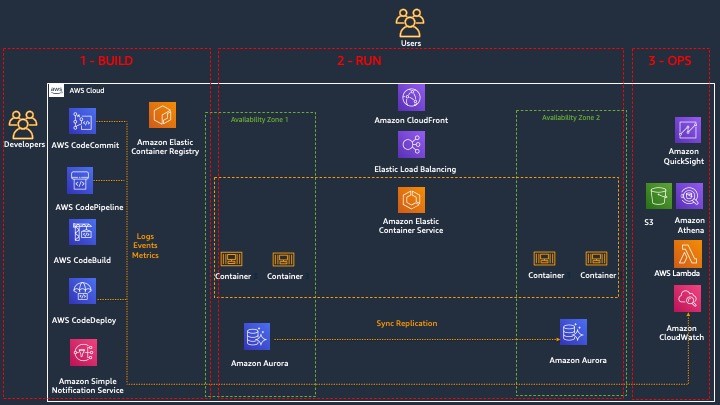AWS Architecture Blog
Category: Analytics
Automating Recommendation Engine Training with Amazon Personalize and AWS Glue
Customers from startups to enterprises observe increased revenue when personalizing customer interactions. Still, many companies are not yet leveraging the power of personalization, or, are relying solely on rule-based strategies. Those strategies are effort-intensive to maintain and not effective. Common reasons for not launching machine learning (ML) based personalization projects include: the complexity of aggregating […]
Building a Controlled Environment Agriculture Platform
This post was co-written by Michael Wirig, Software Engineering Manager at Grōv Technologies. A substantial percentage of the world’s habitable land is used for livestock farming for dairy and meat production. The dairy industry has leveraged technology to gain insights that have led to drastic improvements and are continuing to accelerate. A gallon of milk […]
Field Notes: Ingest and Visualize Your Flat-file IoT Data with AWS IoT Services
Customers who maintain manufacturing facilities often find it challenging to ingest, centralize, and visualize IoT data that is emitted in flat-file format from their factory equipment. While modern IoT-enabled industrial devices can communicate over standard protocols like MQTT, there are still some legacy devices that generate useful data but are only capable of writing it […]
Real-Time In-Stream Inference with AWS Kinesis, SageMaker, & Apache Flink
As businesses race to digitally transform, the challenge is to cope with the amount of data, and the value of that data diminishes over time. The challenge is to analyze, learn, and infer from real-time data to predict future states, as well as to detect anomalies and get accurate results. In this blog post, we’ll […]
Field Notes: Restricting Amazon WorkSpaces Users to Run Amazon Athena Queries
One of the use cases we hear from customers is that they want to provide very limited access to Amazon Workspaces users (for example contractors, consultants) in an AWS account. At the same time they want to allow them to query Amazon Simple Storage Service (Amazon S3) data in another account using Amazon Athena over a […]
Mercado Libre: How to Block Malicious Traffic in a Dynamic Environment
Blog post contributors: Pablo Garbossa and Federico Alliani of Mercado Libre Introduction Mercado Libre (MELI) is the leading e-commerce and FinTech company in Latin America. We have a presence in 18 countries across Latin America, and our mission is to democratize commerce and payments to impact the development of the region. We manage an ecosystem […]
Architecting a Data Lake for Higher Education Student Analytics
One of the keys to identifying timely and impactful actions is having enough raw material to work with. However, this up-to-date information typically lives in the databases that sit behind several different applications. One of the first steps to finding data-driven insights is gathering that information into a single store that an analyst can use […]
Field Notes: Gaining Insights into Labeling Jobs for Machine Learning
In an era where more and more data is generated, it becomes critical for businesses to derive value from it. With the help of supervised learning, it is possible to generate models to automatically make predictions or decisions by leveraging historical data. For example, image recognition for self-driving cars, predicting anomalies on X-rays, fraud detection […]
Why Deployment Requirements are Important When Making Architectural Choices
Introduction Too often, architects fall into the trap of thinking the architecture of an application is restricted to just the runtime part of the architecture. By doing this we focus on only a single customer (such as the application’s users and how they interact with the system) and we forget about other important customers like […]
Field Notes: Monitoring the Java Virtual Machine Garbage Collection on AWS Lambda
September 8, 2021: Amazon Elasticsearch Service has been renamed to Amazon OpenSearch Service. See details. When you want to optimize your Java application on AWS Lambda for performance and cost the general steps are: Build, measure, then optimize! To accomplish this, you need a solid monitoring mechanism. Amazon CloudWatch and AWS X-Ray are well suited […]









